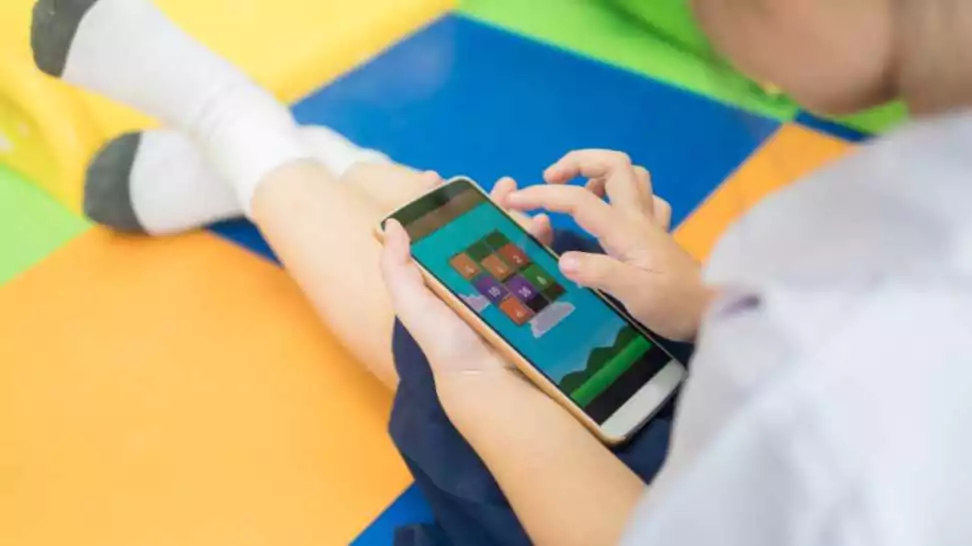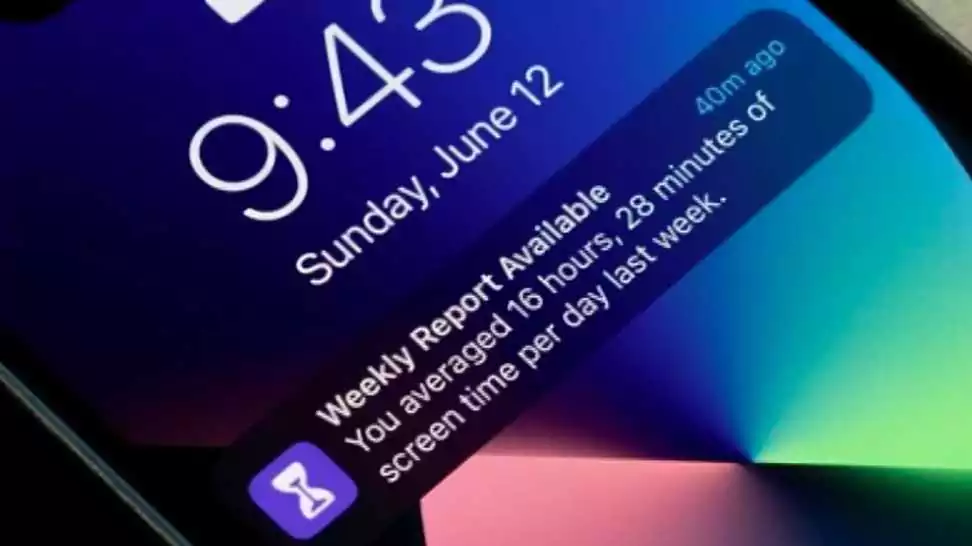What Age Should A Child Get A Smartphone?

In today’s digital era, smartphones are increasingly becoming a part of children’s lives, sparking a significant debate about the right age for a child to own one. This complex issue goes beyond just age, intertwining with concerns about responsibility, maturity, and the influence of technology on childhood. Smartphones offer vast opportunities for information access, learning, and social connections, but they also come with risks like exposure to inappropriate content and potential impacts on mental health and social skills.
This blog aims to provide a balanced guide for parents wondering what age should a child get a smartphone, examining various viewpoints and developmental factors to assist parents and guardians in making informed decisions about introducing smartphones to their children.
1 Understanding the Role of Smartphones in a Child's Life
Keeping Connected with Family and Friends

Smartphones have revolutionised the way children connect with their family and friends. In an age where families might be spread across different cities or even countries, these devices offer an instant and accessible way to maintain close bonds. Video calls, messaging apps, and various social platforms enable children to stay in touch with loved ones, share experiences, and nurture relationships regardless of physical distance.
Educational Apps and Online Resources

The educational potential of smartphones is immense. They serve as a portal to an array of educational apps and online resources that can significantly enhance a child’s learning experience. From interactive language learning apps to educational games that make math fun, smartphones can be powerful tools in supplementing traditional education. They offer personalized learning experiences, allowing children to explore topics they are curious about at their own pace.
Entertainment: Games and Social Media

Entertainment is a significant aspect of smartphones’ appeal to children. Games, which range from simple puzzles to complex strategy games, not only provide fun but can also develop critical thinking and problem-solving skills. Social media platforms, while often criticized, can also play a positive role in helping children learn about digital citizenship and developing social connections in the digital age. However, it’s crucial to monitor usage to ensure a healthy balance and safe online experiences.
Safety Features: GPS Tracking and Emergency Contacts
One of the often-overlooked benefits of smartphones is their role in child safety. With features like GPS tracking, parents can know their child’s location, providing peace of mind when children are away from home. Additionally, smartphones offer quick access to emergency contacts and services, which can be crucial in unexpected situations. Teaching children how to use these features responsibly can empower them and give parents a sense of security.
2 Developmental Considerations
In the debate over when a child should get a smartphone, understanding the developmental implications of smartphone use is crucial. This section delves into how these devices can impact various aspects of a child’s growth and development.
Screen Time and Its Effects on Attention and Learning

Excessive screen time has been shown to affect children’s attention spans and learning processes. Prolonged exposure to screens can lead to shorter attention spans, making it harder for children to focus on tasks or engage deeply with learning activities. This impact can be more pronounced in younger children whose brains are still developing. It’s essential to balance screen time with other activities that stimulate attention and learning, such as reading, outdoor play, and interactive educational tasks.
Impact on Offline Social Interaction and Skills
Smartphones can also impact a child’s ability to interact and socialize in offline settings. While they provide a platform for digital communication, excessive use can limit face-to-face interactions, which are vital for developing social skills. Physical play, direct conversations, and engaging in group activities are critical for learning social cues, empathy, and communication skills. Ensuring that children have ample opportunity for real-world interactions is key to their social development.
Social Media, Emotions, and Self-Image
The influence of social media and online content on children’s emotional well-being and self-image is a growing concern. Constant exposure to curated images and lifestyles can lead to unrealistic expectations and comparisons, affecting self-esteem and body image, particularly in pre-teens and teenagers. It’s vital to discuss the curated nature of social media content with children and encourage an environment where they can express their feelings and concerns.
Insights from Child Psychologists and Educators
Child psychologists and educators stress the importance of moderated and mindful use of technology. They advocate for age-appropriate content, setting boundaries on usage, and the crucial role of parental involvement in guiding children’s digital experiences. Psychologists suggest that technology should complement, not replace, traditional childhood experiences and learning methods. By staying informed and involved, parents can help ensure that their children’s interactions with technology are healthy and beneficial.
3 Age-Specific Guidelines
When considering at what age a child should get a smartphone, it’s crucial to have age-specific guidelines that align with their developmental stages. These guidelines, drawn from expert recommendations, can help parents make informed decisions.
Young Children (Ages 2-5): Screen Time Recommendations
For young children aged 2-5, the American Academy of Pediatrics recommends limiting screen time to one hour per day of high-quality programming. During this formative stage, screen time mustn’t be a solo activity. Parents should co-view and discuss the content with their children, making it an interactive and educational experience. This approach helps in the development of understanding and critical thinking skills.
Children Aged 6-9: Introduction and Monitored Usage of Technology
As children enter the 6-9 age bracket, technology can be introduced more formally. However, it’s vital to monitor and limit their usage. Setting boundaries, such as device-free zones and times, ensures that children engage in a variety of activities. Educational apps and content can be gradually introduced, but parental involvement remains key to guiding and understanding the child’s interaction with technology.
Preteens (10-12): Teaching Online Safety
For preteens, as they become more independent in their internet use, teaching online safety becomes paramount. This age group should be educated about privacy settings, the risks of sharing personal information, and how to recognize and respond to inappropriate content or online behaviour. Encouraging open discussions about their online experiences and any concerns they have is crucial for ensuring their safety and well-being.
Teenagers (13+): Strategies for Responsible Use
For teenagers, smartphones can be tools for learning, socialising, and exploring personal interests. However, it’s essential to instil a sense of responsibility. Strategies include setting rules around usage during study and bedtime, discussing the impact of social media on mental health, and promoting a balanced lifestyle. Encouraging teenagers to engage in activities outside the digital world, like sports, hobbies, and face-to-face interactions, can help maintain a healthy balance.
4 Parental Control and Supervision
Navigating the digital landscape as a parent involves not only deciding when to introduce a smartphone but also how to supervise its use effectively. This section offers guidance on selecting appropriate devices, using monitoring tools, setting rules, and educating children about digital citizenship.
Selecting Age-Appropriate Devices
When choosing a device for your child, consider their age and maturity level. For younger children, simple devices with limited functionality, like basic cell phones or smartwatches designed for kids, can be a good start. These offer basic communication features without unrestricted internet access. For older children and teenagers, smartphones with more features can be introduced, along with discussions about responsible usage.
Parental Control Apps and Monitoring Tools
Parental control apps and monitoring tools are essential for supervising your child’s digital activity. These tools can help manage what content your child can access, set screen time limits, and monitor app usage. Some popular parental control apps include Qustodio, Net Nanny, and Norton Family. It’s important to openly discuss the use of these tools with your child to maintain trust and transparency.
Setting Rules for Screen Time and Online Behavior

Establishing clear rules for screen time and online behaviour is crucial. This might include specific hours when screen use is allowed, curfews for device usage, and rules about app downloads and in-app purchases. Encourage activities that don’t involve screens, and make sure your child has ample time for physical play, reading, and family interaction. These rules should evolve as the child grows and their digital literacy improves.
Discussing Internet Safety and Digital Citizenship
It’s imperative to have ongoing conversations with your child about internet safety and digital citizenship. Discuss the importance of not sharing personal information online, being respectful in digital interactions, and understanding the permanent nature of online actions. Teach them to be critical of the information they find online and to approach digital content with a discerning eye. Building an environment where children feel comfortable discussing their online experiences and concerns with you is key to their safe and responsible digital engagement.
5 Alternatives to Smartphones
While smartphones offer many benefits, they are not the only option for keeping children connected and engaged. Here are some alternatives that parents can consider, especially for younger children or in situations where a smartphone might not be appropriate.
Basic Phones for Younger Children
Basic phones, often referred to as feature phones, are a great alternative for younger children. These phones lack the advanced features of smartphones but still provide essential functions like calling and texting. They are simpler, more durable, and typically have longer battery life. For parents concerned about excessive screen time or internet exposure, basic phones offer a way to stay in touch without the distractions or risks of a smartphone.
Tablets and Computers with Controlled Access
Tablets and computers can also be good alternatives, particularly for educational purposes. Many tablets offer robust parental controls that allow parents to limit access to specific apps and control online activity. Computers used for learning can be set up in a family space to enable supervision and encourage a focused, purposeful use of technology. These devices can provide a more controlled environment for children to explore digital content, educational apps, and games.
Promoting Non-Digital Activities
It’s essential for parents to actively encourage non-digital activities. Outdoor play, sports, reading, arts and crafts, and family board games are not only fun but also crucial for a child’s physical, social, and cognitive development. Engaging in these activities helps children develop a range of skills, from creativity and problem-solving to teamwork and physical fitness. Balancing technology use with ample time for these activities ensures a healthy lifestyle and promotes overall well-being.
6 Wrapping Up
Throughout our exploration of children’s smartphone use, we’ve navigated a terrain of both benefits and challenges. Addressing developmental aspects, age-appropriate guidelines, and alternatives to smartphones, the central message is clear: balance is key. Smartphones bring educational and safety advantages but also pose risks to attention spans, social skills, and exposure to unsuitable content.
There’s no universal answer to the appropriate age for a child to own a smartphone. This decision hinges on individual family values, the child’s maturity, and specific personal circumstances. For parents, the focus should be on thoughtful consideration of these factors, guiding children towards responsible technology use, and maintaining open dialogue.
In essence, determining when a child should get a smartphone is a tailored choice each family should make, aiming to ensure a positive and safe digital experience for their child.
Community Q&A
About This Article
This article has been viewed 137 times.



